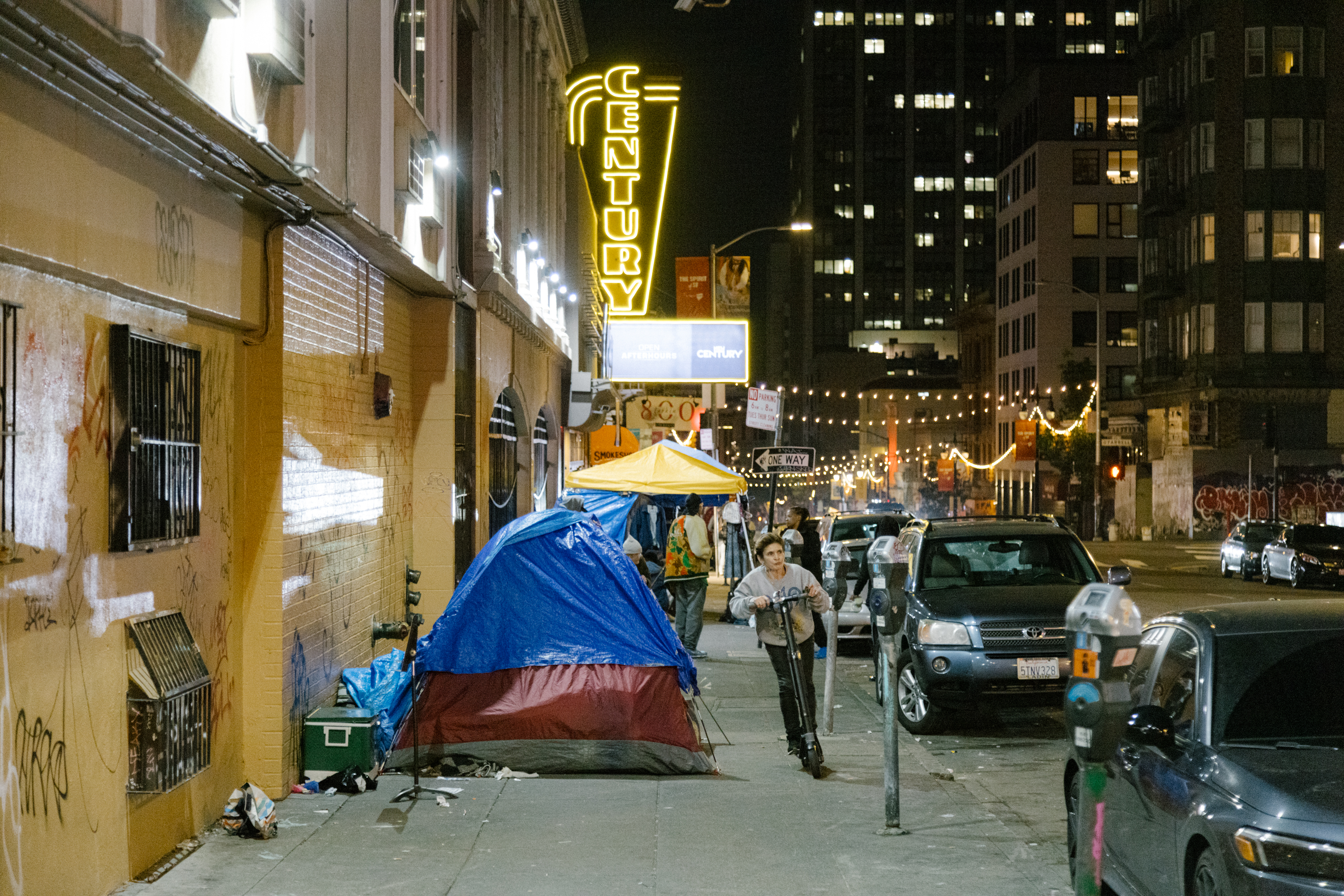The number of homeless people suffering from mental illness and other chronic health conditions in San Francisco has shot up this year, according to a survey released by the city’s homelessness department.
New data released by the San Francisco Department of Homelessness and Supportive Housing found that 51% of the city’s homeless population now suffers from psychiatric or emotional conditions, a 15% increase since 2022. The data is based on a survey of 956 people living on the city’s streets carried out every other year, known as the Point-in-Time Count.
The survey also found roughly 42% of the homeless population now deals with chronic health problems — a 20% increase from 2022.
The Point-in-Time Count involves city workers and volunteers counting the number of homeless people and asking them questions about their living conditions and personal situations.
The homelessness department said in a statement that the uptick in health issues doesn’t come as a surprise. The department has noted an increase of clients suffering from illness in its housing and shelter facilities, but would not speculate on why.
“This outcome is not a big surprise,” the department said in an emailed statement. “Within our shelter and housing programs we have seen an increase in the acuity of our clients across many factors. This trend seems to be consistent with other communities as well.”
In a statement responding to the increase in illness among homeless people, the Department of Public Health pointed to an array of outreach teams, policy changes and treatment centers the city has invested in.
Maurice Byrd, a clinical supervisor for the nonprofit Harm Reduction Therapy Center, said he thinks the data still undercounts the share of homeless people suffering from mental illness in the city. Byrd said many of his clients have declined mentally as the city has increased enforcement measures against people living on the streets.
Since May last year, police have made more than 1,438 arrests for drug use. The city also started conducting “very aggressive” homeless encampment clearings in July. However, the data in this week’s report was collected months before, in January and February.
“I think in general, people are just in more distress,” Byrd said. “You’re seeing people displaced, which means they have poor mental health.”
The report shows that 19% of people attributed their homelessness to drugs or alcohol, a 7% increase since 2022 but up just 1% from 2019. The share of total homeless people who said they suffered from addiction decreased from 52% to 51% since the 2022 count. The primary cause of homelessness is job loss, according to the survey, making up 22% of all responses.
‘No help is coming’
Overall, the total number of homeless people increased by 7% — in part due to the city’s additional efforts this year to more accurately count the number of homeless families.
The number of families counted in the survey nearly doubled since 2022, totaling 405 households comprising 1,103 people, and the waitlist for family homeless shelters has only grown since the count was conducted. As of Thursday afternoon, 528 families, including 801 adults and 751 children, were waiting for shelter, according to Compass Family Services, a nonprofit with access to city data on family homelessness.
Hope Kamer, policy director at Compass, said there seems to be a lack of political will to solve the crisis facing families.
“It’s just kind of mind-boggling that we’ve just decided that this is going to be a normal thing,” Kamer said. “Families have nowhere to go, and no help is coming.”
Emily Cohen, a spokesperson for the homelessness department, said in an email that the city recently allocated $50 million over the next two years to expand housing and shelter for homeless families. Those investments will provide shelter for roughly 600 families and house more than 450 families, she said.
“To me this does demonstrate the political will to add resources to address this crisis,” Cohen said.
Roughly 30% of homeless families in the city are Hispanic or Latino, 25% are mixed-race Hispanic or Latino, 22% are Black, 11% are white, 5% are Asian and 5% are Native American.
The report shows 43% of Black homeless families are living unsheltered, according to the data, the most of any other race.
The data also shows homeless people have moved around the city since 2022. The districts containing the Tenderloin and SoMa neighborhoods, long known as the epicenter of the crisis, saw 13% and 14% decreases, respectively.
District 10, which contains the Bayview, Visitacion Valley and Dogpatch neighborhoods, saw the biggest influx of unsheltered homelessness, climbing by 443 people. District 3, which includes North Beach, saw the most dramatic rise in its total homeless population, with 418 people moving into shelters in that district.
The survey found a 12% decrease in people saying they first became homeless in San Francisco, bringing the share of homeless people who previously had housing in the city to 59%. Mayor London Breed cited this figure when issuing an executive order on Aug. 1, requiring city workers to offer a bus ticket out of town to homeless people before other services.
